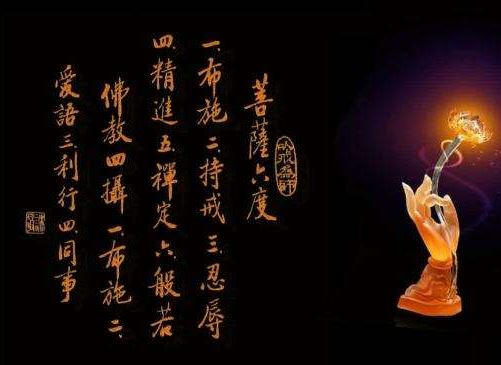Introduction--A Exploration of the Origin of Chinese Zen Buddhism
2024-10-07 Buddhism
Buddhism is the holistic teaching that realizes the only reality in the Dharma Realm, and Zen is one of the many sects of Buddhism.This article regards Chinese Zen as one of the important components of overall Buddhism, or examines a certain perspective of Buddhism, rather than a teaching that can be separated from Buddhism, or a teaching that is compatible with other sects.Because I mistakenly believe that the division of sects between sects and sects will make the entire Buddhism a fragmented and disintegrated purely religious religion that is committed to their own actions, thus losing the scientific nature, rationality and wisdom of Buddhism that has the real reality of the Dharma Realm, and it is impossible to understand Buddhism.
Although this article is marked with "China" in Zen, its purpose is to show that Buddhism is a rational religion that compassions with all sentient beings, so under the scientific nature of realizing the reality of the Dharma Realm, it can have a unique Chinese national characteristics that adapt to the education area.When Buddhism comes from the east and becomes great in Zhendan, and then it is absorbed and internalized by sentient beings and integrated into life, it becomes a unique thought and culture that sentient beings can look down on the whole world and become a unique cultural asset in China;Therefore, it is called "China" based on secular language, so as to distinguish Buddhism from the convenient flow of various educational areas and is in line with the Buddha's teachings, and to explore the origin, connotation and essence of "Chinese Zen".
However, a few people in the Chinese Buddhist community and some Japanese academic community deliberately ignore or be ignorant of the essence of the Buddhist sages who have always taken the realization of the Dharma Realm as their goal, regard Buddhism as the result of evolution based on Indian philosophy as the root, and later evolved into convenient dissemination in various places, so that the Buddhist Zen, whose essence has never changed, is divided into "Chinese Zen" or "Indian Zen", and advocates that the two are of different natures.For example, the Japanese scholar Hukagu Kuitian (1867-1934)'s book "History of Zen Thoughts" was summarized by modern scholar Yang Zengwen as follows:
There are two parts of the book: "Indian Ministry" and "China Ministry".The "Indian Tribe" accounts for only 11% of the entire book, discussing "heterodian Zen" (the yoga meditation of Brahmanism and number theory) and "hibitional Zen", aiming to explain that Buddhist Zen originates from "heterodian" meditation expressed in documents such as the Upanishads, but has developed.1�
There are two chapters in the "Indian Division" written by Hu Huagu Kuaitian: the first chapter "Heavenly Zen" and the second chapter "Haishop Zen" 2;The judgment of Buddhism's Zen in India as "Haisatis Zen", which made the Chinese Mahayana Zen, which spread in East Asia, have no roots and is completely separated from the Mahayana Buddhism preached by the Buddha.The implicit meaning of the division method of Hushegu Kui Tian is: the connotation proved by Chinese Zen Buddhism, which belongs to Mahayana Buddhism, is not spoken by the Buddha himself.The "History of Zen Thoughts" written on the premise that "Mahayana is not the Buddha's teaching" does not conform to historical facts, nor does it conform to documentary evidence and Buddhist doctrines.Because Sakyamuni Buddha was a historical figure who created Buddhism, Huo Kuaitian obviously had a wrong understanding of whether Sakyamuni Buddha belonged to Mahayana or Hinayana in Buddhism.Since Shakyamuni Buddha has become a Buddha, he is obviously a Mahayana practitioner. How could he create Buddhism but only teach "Haisatis meditation" and refuse to teach Mahayana meditation that can make his disciples become Buddhas?Therefore, Hushuagukuhashi advocated that Buddhism is just "Hispanic Zen" in India, which advocated that Sakyamuni Buddha was just a Hinayana practitioner, just an Arhat rather than a Buddha.Such a claim has violated historical facts, documentary evidence and Buddhist doctrines and has caused a lot of mistakes.3�
Although this article uses "Chinese Zen" to describe Zen studies popular in East Asia, it does not adopt the wrong premise of "Mahayana is not a Buddha's teaching", nor does it mean that "Chinese Zen" and "Indian Zen" are essentially different.However, if the Buddha is a Mahayana practitioner and has achieved full realization, he will definitely teach not only Hinayana meditation, but also Mahayana meditation;So what is the documentary evidence of the Buddha's teaching of Mahayana Zen?What is the difference between Hinayana and Mahayana meditation?What is the documentary evidence?This triggered the research in this article.
The Chinese Agama scriptures are the earliest and most evidential documents in Buddhism. They are the consensus between the Buddhist and academic circles at present, and they often become important documents for scholars to explore the origin of Mahayana teachings.In addition to using bibliographic text criticism ( text criticism) The method of comparing the content of the scriptures and using empirical criticism ( positivist criticism) The method of judging the content of the scriptures to distinguish the correctness of the judging.Text criticism is a method commonly used in philology, but its disadvantage is that it focuses on the comparison, interpretation, imagination and inference of the text itself, and lacks critical standards for truthful observation of the reality of the Dharma Realm.The difference between empirical criticism and text criticism is that before text criticism, the truthful observation of the reality of the Dharma Realm is used to judge various texts with the scientific spirit that can repeat objective verification of facts, and distinguish the correctness of the reading itself.Because when describing Buddhism from methodology, true Buddhism should be called empirical Buddhism 4, so this article believes that only by using empirical critical methods as the basis, supplemented by bilical and hermeneutic methods such as text criticism, can the correct research results be obtained.
Chinese Zen Buddhism has always been unique in its case characteristics. Therefore, the research approach in this article is to study the documentary evidence of Zen cases in the Agama scriptures through empirical criticism, supplemented by philology and hermeneutics, as well as documentary evidence of the content and empirical connotation of Zen cases, as well as documentary evidence of the differences between Hinayana and Mahayana Zen, which is used as the basis for Chinese Zen to explore the origin of the Agama scriptures.If Chinese Zen Buddhism can indeed be explored from the Agama scriptures, this article will also briefly describe the historical significance represented by these documentary evidence.
1 Written by Yang Zengwen, "History of Zen Thoughts" and the Study of Chinese and Japanese Zen Buddhism over the past sixty years;Suddenly, written by Kuaitian, translated by Zhu Qianzhi, "History of Chinese Zen Thoughts", Shanghai Ancient Books Publishing House (Shanghai), 1994, preface 2.
2 Huo Shugu Kuaitian, translated by Guo Minjun, "History of Zen Thoughts", Daqian Publishing House (Taipei), 2003, pp. 1-218.
3 For an overview of the argument that the "Mahayana is not a Buddha's theory" violates historical facts, documentary evidence and Buddhist principles, please refer to: "Written by Gao Huiling and Cai Lizheng, "Commentary on Buddhist Studies and Historical Imagination by the various sutras of the Agama Tribe" by Lu Kaiwen's Hermeneutic Strategy for Exploring the Mahayana transformation of the Shravaka Sutra from two categories of "Yangyu Moluo Sutra"";Journal of Zhengjue Scholarship Issue 3, Zhengjue Education Foundation (Taipei), 2010, pp. 125-192.
4 Please refer to: Xiao Pingshi, "Creation of the Issue";The first issue of "Journal of Zhengjue" is Zhengjue Education Foundation (Taipei), 2007, page 9.
Complete collection of Buddhist scriptures
Share on WeChat
Scan the QR code to share on WeChat or Moments


























